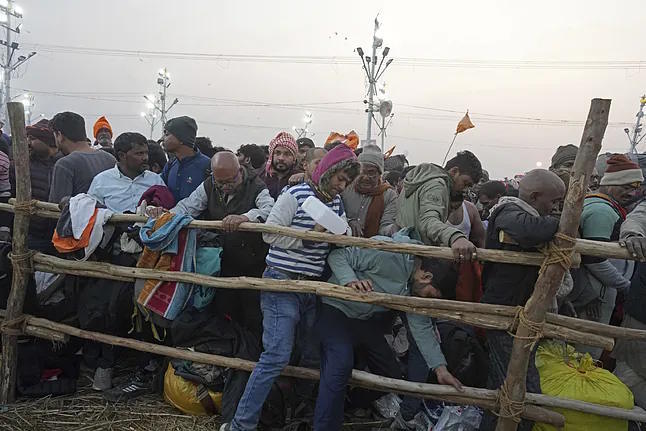Never in history had so many people gathered in one place: 400 million people were expected to bathe in the Ganges River, with over 100 million estimated to coincide on Wednesday, January 29. These days, in northern India, the Kumbh Mela is being celebrated, the world's largest Hindu festival. Authorities had warned of large crowds this year, but were confident that they would not lead to several deadly stampedes when millions of pilgrims gather in the early hours to take a dip in their sacred river. Dozens of deaths are feared.
Wednesday, January 29, was considered the most auspicious day of the festival because Hindu astrologers said there would be a celestial alignment that had not occurred in 144 years. Several videos circulating on social media show avalanches of people on the riverbanks. The death toll figures are fluctuating at this time. Some media outlets point to over a dozen deaths, while unconfirmed reports suggest the number could exceed fifty.
Many Hindus believe in the power emanating from three sacred rivers, two real and one imaginary: Ganges, Yamuna, and Sarasvati. At the point where their waters converge, in the city of Prayagraj, in the northern state of Uttar Pradesh, where it is believed that a deity named Vishnu dropped four drops of nectar of immortality, the Kumbh Mela began two weeks ago, held every 12 years and lasting 45 days.
Hindu devotees try to cross a barricade to take a sacred bath at Sangam, the confluence of the Ganges.RAJESH KUMAR SINGH | AP
The accident is believed to have occurred around 2:00 a.m., when people sleeping on the riverbanks were trampled by other pilgrims rushing for the first baths in the sacred waters at dawn. Festival organizers had already warned that this year would see the largest religious gathering of all time, with the Ganges banks filled with millions of devotees, ascetics, bearded monks, and tourists.
Officials have announced that for now, the main attraction of the day, known as the "royal bath," has been canceled, where thousands of ascetics covered in ash immerse themselves in the water.
In the areas with the highest concentration of people during the festival, local authorities said they set up huge camps with 160,000 tents. Although most of those arriving are very poor or people who have voluntarily renounced their material possessions, luxurious tents are also offered, with private bathrooms, heating, and even a butler, for around 1,000 euros per night.
150,000 portable toilets were also installed over more than 4,000 hectares, and roads crossing the city and floating bridges were built to facilitate the movement of people, elephants, camels, horses, and cows, all adorned with traditional marigold garlands. Authorities announced this week that nearly 200 million people had already bathed in the river since the festival began on January 13.
Prime Minister Narendra Modi described the incident as "extremely sad" and conveyed his condolences without specifying how many people had died. "My deepest condolences to the devotees who have lost their loved ones. In addition to this, I wish a speedy recovery to all the injured," Modi said in a post on the X social network.
In India, the world's most populous country, home to over 1.4 billion people, deadly stampede news at crowded events related to religious festivals is common. Just this month, at least six people died and 35 were injured in a stampede near one of the country's busiest temples in the southern state of Andhra Pradesh.
Last summer, around 121 people were crushed to death after thousands of devotees gathered to see a famous Hindu preacher. To find the deadliest stampede, one must go back two decades when 265 people died in a stampede at a temple in the state of Maharashtra.
